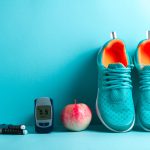Living with diabetes can be challenging, but arming yourself with the right tools and knowledge can make all the difference. One essential tool for managing diabetes is a blood glucose meter. With so many options on the market, choosing the right one for you may seem overwhelming. Fear not! In this guide, we will break down everything you need to know about selecting the perfect blood glucose meter to suit your needs and lifestyle. Let’s dive in and take control of your health together!
Understanding Blood Glucose Meters
Understanding Blood Glucose Meters is crucial for effectively managing diabetes. These devices measure the concentration of glucose in your blood, providing valuable insights into your current health status. By regularly checking your blood sugar levels with a glucose meter, you can make informed decisions about diet, exercise, and medication adjustments to keep your diabetes under control.
Blood glucose meters work by analyzing a small sample of blood obtained through a finger prick. The results are displayed on a screen as a numerical value, indicating your current blood sugar level. It’s important to follow the instructions provided with your specific meter to ensure accurate readings.
Different meters may have varying features such as memory storage capacity, size of the display screen, speed of results, and compatibility with smartphone apps for data tracking. Consider these factors when choosing the right meter for you.
Factors to Consider When Choosing a Blood Glucose Meter
When selecting a blood glucose meter, consider the importance of accuracy. Choose a device that provides reliable readings to help manage your diabetes effectively. Ease of use is another crucial factor to keep in mind. Opt for a meter with clear instructions and simple operation for hassle-free monitoring.
Portability is key when deciding on a blood glucose meter. Pick a compact and lightweight model that fits your lifestyle, whether you’re at home or on the go. It’s also essential to think about compatibility with other devices like smartphones or computers for seamless data tracking.
Cost is always a consideration when purchasing a blood glucose meter. Compare prices and features to find the best value for your budget without compromising on quality. Don’t forget about customer support and warranty options provided by the manufacturer for added peace of mind during your journey managing diabetes.
Types of Blood Glucose Meters
When it comes to choosing a blood glucose meter, there are several types available on the market. One common type is the traditional glucose meter that requires a finger prick to draw blood for testing. These meters provide accurate readings but can be inconvenient for some users due to the need for frequent blood sampling.
Another type is continuous glucose monitoring (CGM) systems, which offer real-time glucose readings without the need for manual blood tests. CGMs use sensors placed under the skin to track glucose levels throughout the day, providing valuable insights into trends and patterns.
Some newer models combine both traditional metering and CGM capabilities, offering users flexibility in how they monitor their glucose levels. These hybrid devices provide convenience and comprehensive data analysis for better diabetes management.
It’s essential to consider your lifestyle, preferences, and budget when selecting a blood glucose meter that suits your needs. Each type has its benefits and drawbacks, so choose one that aligns with your individual requirements for effective diabetes management.
Top Brands and Models on the Market
When it comes to choosing a blood glucose meter, there are several top brands and models on the market that cater to different needs and preferences. One popular brand is Accu-Chek, known for its accuracy and ease of use. Another well-known brand is OneTouch, which offers a range of meters with various features.
For those looking for advanced technology, the FreeStyle Libre system provides continuous glucose monitoring without routine fingersticks. On the other hand, the Contour Next line offers reliable results and compatibility with diabetes management apps.
Some users prefer compact meters like the Prodigy Pocket or convenient options like the Dario all-in-one smart meter. Each brand has its unique selling points, so it’s essential to consider your lifestyle and requirements when selecting a blood glucose meter that suits you best.
Features to Look for in a Blood Glucose Meter
When choosing a blood glucose meter, there are key features to consider that can make managing diabetes easier. Look for a meter with a large display screen that is easy to read, especially for those with visual impairments. Some meters offer backlit screens for better visibility in low-light conditions.
Consider the size and portability of the meter – compact designs are convenient for on-the-go testing. Meters with ergonomic shapes and nonslip grips can also enhance usability and comfort during testing. Additionally, some meters come with alternative site testing capabilities, allowing you to test from areas other than your fingertips.
Another important feature is the memory capacity of the meter – choose one that stores an adequate number of readings to track patterns over time. Connectivity options like Bluetooth or USB can enable data sharing with healthcare providers or smartphone apps for comprehensive monitoring.
Look for meters that require minimal blood samples and have fast processing times for quick results. These features can streamline your testing routine and make managing diabetes more efficient and effective.
How to Use and Maintain Your Blood Glucose Meter
Once you’ve chosen the right blood glucose meter for yourself, it’s essential to know how to use and maintain it properly. Begin by thoroughly reading the instruction manual provided with your device. This will give you step-by-step guidance on how to perform accurate readings.
Before using the meter, ensure that your hands are clean and dry to avoid any interference with the results. It’s also crucial to regularly calibrate your meter as per the manufacturer’s instructions. This helps in maintaining its accuracy over time.
Make sure to keep a log of your readings, noting down any patterns or trends you observe. Regularly check the battery life of your device and replace them when needed to prevent inaccurate readings.
Cleaning your blood glucose meter is important too; use a soft cloth dampened with mild soap and water for this purpose. Avoid using harsh chemicals that could damage the device.
By following these simple steps, you can ensure accurate readings from your blood glucose meter and prolong its lifespan.
Tips for Accurate Readings and Troubleshooting Common Issues
When it comes to getting accurate readings from your blood glucose meter, there are a few tips that can help ensure you’re getting the most reliable results possible. Make sure to wash and dry your hands before testing to avoid any potential contaminants affecting the reading. Additionally, be consistent with where you test on your body as varying locations can yield different results.
If you suspect something is off with your readings, don’t panic. Instead, troubleshoot common issues like expired test strips or low battery levels in the meter. It’s also essential to regularly calibrate your device according to manufacturer recommendations for optimal accuracy.
Another tip is not to squeeze or milk your finger when obtaining a blood sample as this could alter the glucose levels in the drop of blood. Always follow the instructions provided with your specific meter model for best practices and troubleshooting guidance.
Cost Comparison of Different Blood Glucose Meters
When choosing a blood glucose meter, cost is an important factor to consider. Prices can vary depending on the brand, model, and features of the device. Some meters may require you to purchase test strips separately, which can add to the overall cost over time.
It’s essential to compare not only the upfront cost of the meter but also the ongoing expenses associated with it. Look for deals or discounts offered by manufacturers or pharmacies that could help offset some of these costs.
Keep in mind that some insurance plans may cover all or part of the expenses related to purchasing a blood glucose meter and supplies. It’s worth checking with your provider to see if you are eligible for any financial assistance in this area.
Finding a balance between affordability and quality is key when selecting a blood glucose meter that meets your needs while fitting within your budget.
The Future of Blood Glucose Meters
The Future of Blood Glucose Meters
As technology continues to advance, the future of blood glucose meters looks very promising. We can expect to see even more user-friendly devices with enhanced features for easier monitoring and management of diabetes. From Bluetooth connectivity for seamless data transfer to smartphone apps that analyze trends and provide personalized recommendations, the possibilities are endless.
Innovations in wearable technology may soon offer continuous glucose monitoring systems that eliminate the need for frequent finger pricks. These new devices will revolutionize how individuals with diabetes track their blood sugar levels, leading to better overall health outcomes.
With ongoing research and development in the healthcare industry, we can anticipate further improvements in accuracy, convenience, and affordability when it comes to blood glucose meters. By staying informed about the latest advancements and choosing a meter that meets your specific needs, you can take control of your diabetes management effectively. Embrace these innovations as they become available – a brighter future for managing diabetes is on the horizon!



